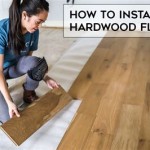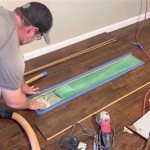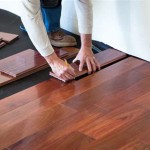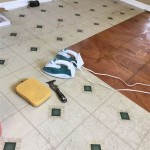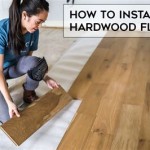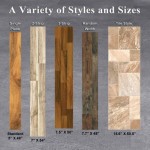Can You Use Vinyl Sheet Flooring on Walls?
Vinyl sheet flooring offers a durable, water-resistant, and affordable flooring solution. Its versatility has led many to wonder if it can be applied to walls as well. This article explores the feasibility, benefits, drawbacks, and installation process of using vinyl sheet flooring on walls.
Durability and Water Resistance
Vinyl sheet flooring is known for its resilience. It withstands heavy foot traffic and resists scratches, scuffs, and stains, making it ideal for high-traffic areas. This durability translates well to wall applications, providing a protective layer against everyday wear and tear. Furthermore, its inherent water resistance makes it a suitable choice for areas prone to moisture, such as bathrooms, kitchens, and laundry rooms. The impermeable surface prevents water damage and the growth of mold and mildew.
Cost-Effectiveness and Design Variety
Compared to other wall coverings like tile or wallpaper, vinyl sheet flooring offers a significant cost advantage. It is typically less expensive per square foot, contributing to a more budget-friendly renovation. Moreover, the wide array of available designs and patterns allows for extensive customization. From wood-look planks to intricate tile patterns, vinyl sheet flooring can mimic the appearance of more expensive materials, offering both aesthetic appeal and affordability.
Installation Considerations and Challenges
Installing vinyl sheet flooring on walls presents some unique challenges. Due to its weight and flexibility, large sheets can be difficult to manage, especially on vertical surfaces. Proper surface preparation is crucial for successful adhesion. Walls must be clean, smooth, and free of any imperfections. Using the correct adhesive is also vital, as standard flooring adhesive may not be suitable for vertical application. Specialized adhesives designed for wall applications are recommended to ensure a secure and lasting bond.
Another consideration is the potential for seam visibility. While seamless installation is possible for smaller wall sections, larger areas may require multiple sheets, creating visible seams. Careful planning and precise cutting can minimize seam appearance, but complete invisibility is often difficult to achieve. For this reason, vinyl sheet flooring might be more suitable for smaller wall sections or areas where seams can be strategically concealed.
Surface Preparation and Adhesive Selection
Proper surface preparation is paramount for a successful installation. The wall surface must be thoroughly cleaned and dried to ensure proper adhesion. Any imperfections, such as cracks or holes, should be filled and sanded smooth. A primer specifically designed for vinyl application can further enhance adhesion and provide a uniform surface. Choosing the correct adhesive is equally important. A high-quality, heavy-duty adhesive designed specifically for wall applications should be used. Consult with a flooring professional or adhesive manufacturer to determine the most suitable adhesive for the specific type of vinyl sheet flooring being used.
Cutting and Fitting
Accurate measurements and precise cutting are essential for a professional-looking installation. Careful planning and layout are crucial to minimize waste and ensure proper alignment. Use a sharp utility knife and a straight edge for clean, accurate cuts. When working with patterned vinyl, ensure the pattern aligns correctly across multiple sheets. Test fit the sheets before applying adhesive to ensure a proper fit and address any necessary adjustments.
Maintenance and Longevity
Once installed, vinyl sheet flooring on walls is relatively easy to maintain. Its smooth, non-porous surface is resistant to dirt and grime, making cleaning a simple task. Regular wiping with a damp cloth and mild detergent is usually sufficient. Avoid abrasive cleaners or scouring pads, as they can damage the surface. With proper installation and maintenance, vinyl sheet flooring on walls can provide a durable and attractive finish for many years.
Alternatives to Consider
While vinyl sheet flooring offers a unique and cost-effective solution for wall coverings, other options are available. Vinyl wall panels, specifically designed for vertical applications, offer a simpler installation process and often feature a thinner, more manageable profile. Wallpaper, while less durable than vinyl, offers a wider range of patterns and textures. Tile, although more expensive, provides exceptional durability and a classic aesthetic.
Ventilation and Moisture Management
In areas prone to high humidity, such as bathrooms and kitchens, adequate ventilation is crucial to prevent moisture buildup behind the vinyl sheet flooring. Properly installed exhaust fans can help circulate air and remove excess moisture, mitigating the risk of mold and mildew growth. Ensuring good ventilation is essential for maintaining the integrity of the vinyl and the underlying wall structure.

Diy Wood Accent Wall Using Vinyl Planks Love Renovations

Vinyl Planks On Wall Flooring Kitchen Walls

Can Vinyl Flooring Be Used On Walls Home Expo Asia

Tips On Installing Vinyl Flooring Walls Ll Lumber Liquidators

Wall Cladding With Flooring Material 2024 09 23 Floor Trends Installation

Can Vinyl Flooring Be Used On Walls And Shower In Singapore Property

Can You Use Vinyl Flooring On Bathroom Walls Rustic Remodel Lighting Diy

The Wall How To Install Vinyl Flooring On A Lowe S

How To Install Waterproof Vinyl Plank Flooring Four Generations One Roof

Can You Use Vinyl Flooring On Wall Tilen Space Laminate Walls
See Also
